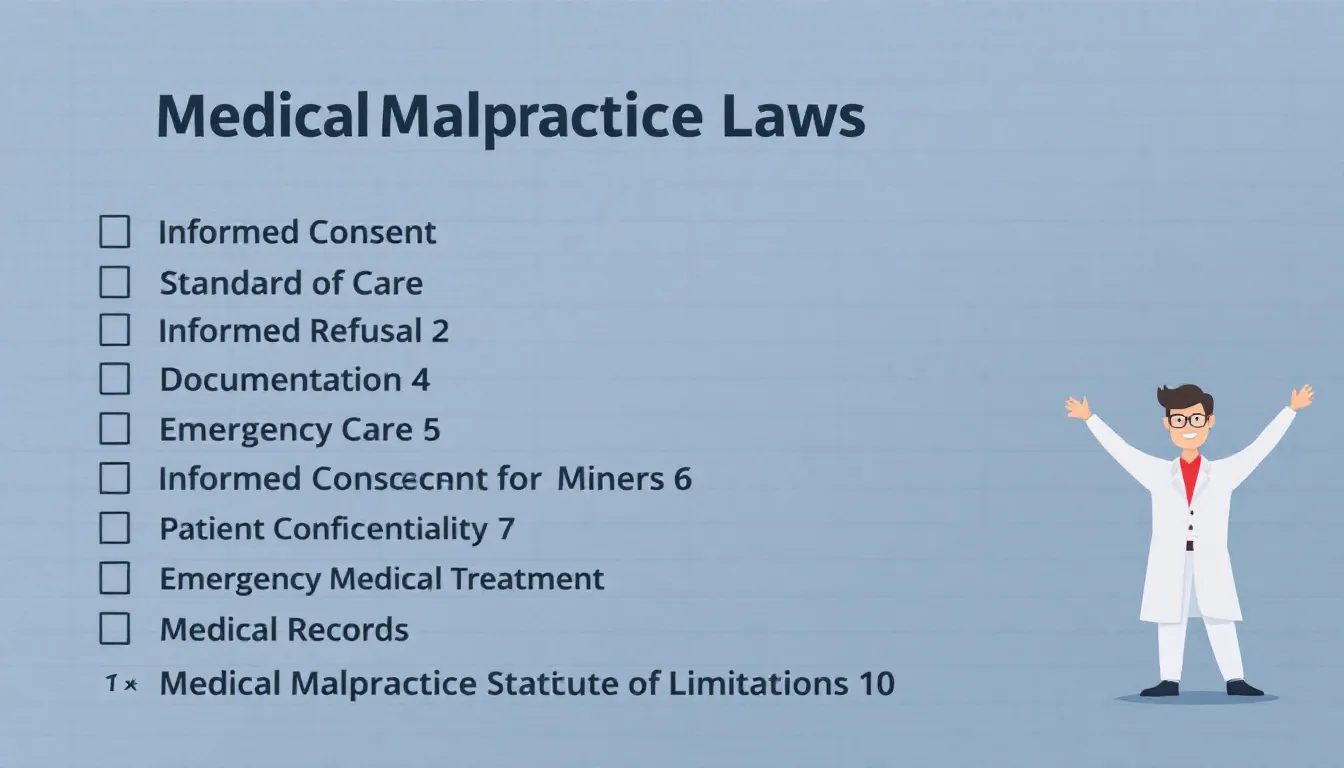Malpractice Medical Lawyer in California: Understanding Your Rights and Legal Options

When we place our trust in medical providers, we expect to receive care that meets professional standards. Unfortunately, medical errors and negligence happen more frequently than many realize, leaving patients with serious injuries, worsening health conditions, or even wrongful death.
If you or a loved one has suffered harm due to a healthcare provider’s negligence in California, understanding your legal rights and options is essential to securing fair compensation.
Introduction to Medical Malpractice
Medical malpractice occurs when a healthcare provider fails to meet the standard of care, resulting in injury or harm to a patient. This can happen in various healthcare settings, including hospitals, doctor’s offices, and clinics. Medical malpractice cases can be complex and require the expertise of medical malpractice lawyers who specialize in this area of law. If you suspect medical malpractice, it is essential to consult with a medical malpractice attorney who can guide you through the legal process and help you determine if you have a valid medical malpractice claim.
What Qualifies as Medical Malpractice in California?

Medical malpractice occurs when a healthcare provider fails to provide the standard level of care that other reasonably careful practitioners would deliver in similar circumstances, resulting in patient harm. This legal concept isn’t about perfect care – it’s about meeting accepted professional standards.
A medical mistake can have severe consequences, leading to lifelong health issues and the need for legal support to seek compensation.
In California, to prove medical malpractice, you must establish:
- A doctor-patient relationship existed, creating a duty of care
- The healthcare provider was negligent (failed to meet professional standards)
- This negligence directly caused your injury
- You suffered damages as a result (medical expenses, lost wages, pain and suffering)
Common examples of medical malpractice include surgical errors, misdiagnosis or delayed diagnosis, medication mistakes, birth injuries, anesthesia errors, and failure to obtain informed consent for procedures.
Related Terms: medical procedures, medical community, medical treatment, future medical expenses, personal injury cases, personal injury lawyers, considered medical malpractice, law firm
Understanding Malpractice Claims
A medical malpractice claim is a type of personal injury claim that alleges a healthcare provider was negligent in their care, resulting in harm to the patient. To prove a medical malpractice claim, the plaintiff must show that the healthcare provider breached the standard of care, and that this breach caused the patient’s injury.
Medical malpractice cases can involve various types of negligence, including misdiagnosis, surgical errors, medication errors, and anesthesia errors. Medical malpractice lawyers work with medical experts to analyze medical records and determine if the healthcare provider’s actions were negligent.
California’s Medical Malpractice Laws: Key Facts You Should Know

Statute of Limitations
Time is critical in medical malpractice cases. In California, you generally have one year from discovering your injury (or when you should have reasonably discovered it) or three years from the date the malpractice occurred—whichever comes first—to file a lawsuit. Special considerations apply for minors and cases involving foreign objects left in the body.
Missing these deadlines can permanently prevent you from seeking justice, making prompt action essential if you suspect medical negligence.
The MICRA Cap on Non-Economic Damages
California’s Medical Injury Compensation Reform Act (MICRA) significantly impacts medical malpractice cases. As of January 1, 2025, MICRA caps non-economic damages (pain and suffering) at $430,000 in non-fatality cases. This cap increases by $40,000 annually until reaching $750,000.
For wrongful death cases, the cap is currently $600,000, increasing by $50,000.00 annually until reaching $1 million. After reaching these maximum amounts, both caps will increase by 2% annually to account for inflation.
Importantly, there are no caps on economic damages such as medical bills, lost wages, and future care costs. Despite these caps, it is crucial to work with an experienced attorney to ensure you receive full and fair compensation for your injuries.
Expert Testimony Requirements
California medical malpractice cases almost always require testimony from a medical expert. These medical experts must establish what the appropriate standard of care was in your specific situation and how the healthcare provider deviated from that standard. Finding qualified experts willing to testify against other medical professionals can be challenging but is crucial to your case.
Filing a Claim

If you believe you have been a victim of medical malpractice, it is crucial to file a claim as soon as possible. The statute of limitations for medical malpractice cases varies by state, but generally, you have a limited time to file a claim. Medical malpractice lawyers can help you navigate the legal process and ensure that your claim is filed within the required timeframe.
When filing a medical malpractice claim, it is essential to have a thorough understanding of the legal process and the requirements for proving a medical malpractice case.
Notable California Medical Malpractice Cases

Huffman v. Lindquist (1951)
This landmark case highlighted the challenges plaintiffs face in securing expert testimony. The plaintiff alleged her son died due to the doctor’s failure to diagnose an epidural hemorrhage and provide appropriate treatment. In this case, the plaintiff’s attorney faced significant challenges in securing expert testimony to establish the standard of care. The court’s decision emphasized the difficulty of obtaining expert witnesses in medical malpractice cases, as doctors are often reluctant to testify against colleagues.
The case established that expert testimony is generally required to establish the standard of care in medical malpractice cases, which remains a significant hurdle for plaintiffs today.
Related Terms: Traumatic brain injury, injured patients, substandard medical care, medical costs, health care providers, legal claim, healthcare facilities, defendant physicians, alleged negligence
Flores v. Presbyterian Intercommunity Hospital (2016)
In this significant case, a patient was injured when a hospital bed rail collapsed. The California Supreme Court ruled that this incident constituted professional negligence rather than ordinary negligent conduct because the bed rail was “integrally related to the patient’s medical diagnosis and treatment.”
This decision clarified the distinction between ordinary and professional negligence in healthcare settings, affecting which statute of limitations applies and highlighting the importance of timely filing medical malpractice claims.
Healthcare Professional Negligence

Healthcare professional negligence occurs when a healthcare provider fails to meet the standard of care, resulting in harm to a patient. This can include negligence by doctors, nurses, hospitals, and other healthcare providers.
Medical malpractice lawyers specialize in representing victims of healthcare professional negligence and work to hold negligent healthcare providers accountable for their actions. Healthcare professional negligence can result in serious injury, including physical pain, emotional distress, and even death.
Causation and Damages
To prove a medical malpractice claim, the plaintiff must show that the healthcare provider’s negligence caused their injury. This requires establishing a direct link between the healthcare provider’s actions and the patient’s harm. Medical malpractice lawyers work with medical experts to establish causation and determine the extent of the patient’s damages.
Damages in a medical malpractice case can include economic damages, such as medical expenses and lost wages, as well as non-economic damages, such as pain and suffering. In some cases, punitive damages may also be awarded to punish the healthcare provider for their negligence. Medical malpractice attorneys can help you understand the types of damages you may be eligible for and work to ensure that you receive fair and full compensation for your injuries.
Steps to Take If You Suspect Medical Malpractice

- Seek proper medical care – Your health comes first. Find another healthcare provider to address your medical needs and document the harm caused.
- Request and organize your medical records – Comprehensive medical records are essential evidence. Request copies of all relevant records before they might be altered.
- Document everything – Keep detailed notes about your condition, conversations with healthcare providers, symptoms, and how the injury has affected your life.
- Consult with a medical malpractice attorney – California’s medical malpractice laws are complex. An experienced attorney can evaluate your case, secure expert witnesses, and navigate procedural requirements to file a medical malpractice claim.
- Act promptly – Remember the statute of limitations and don’t delay in seeking legal advice.
The Medical Malpractice Litigation Process
Medical malpractice lawsuits typically follow these stages:
- Case evaluation – Your attorney will review your records and consult with medical experts to determine if you have a viable case.
- Filing the lawsuit – If your case has merit, your attorney will file a formal complaint against the healthcare provider(s).
- Discovery phase – Both sides gather evidence, take depositions, and exchange information about the case.
- Negotiation and possible settlement – Many medical malpractice cases settle before trial. Your attorney will negotiate with the healthcare provider’s insurance company for fair compensation.
- Trial – If a settlement isn’t reached, your case will proceed to trial, where both sides present evidence and arguments. It is important to be aware that court costs, including attorney fees and expert testimony, can accumulate significantly during the litigation process.
- Appeal – Either party may appeal the court’s decision if they believe legal errors occurred during the trial.
Frequently Asked Questions About California Medical Malpractice
How do I know if I have a valid medical malpractice claim?
Not every bad medical outcome indicates malpractice. The key question is whether the healthcare provider deviated from the accepted standard of care. A medical malpractice attorney can help evaluate your specific situation and determine if you have enough evidence to prove malpractice.
How much does it cost to hire a medical malpractice attorney?
Most medical malpractice attorneys work on a contingency fee basis, meaning they only get paid if you receive compensation. Typically, the attorney receives a percentage of your settlement or verdict.
What types of damages can I recover in a medical malpractice lawsuit?
You may be entitled to economic damages (medical expenses, lost wages, future medical care costs) and non-economic damages (pain and suffering, emotional distress), though non-economic damages are subject to MICRA caps as detailed above.
How long will my medical malpractice case take?
Medical malpractice cases are complex and can take anywhere from one to several years to resolve, depending on the specific circumstances and whether the case settles or goes to trial.
Can I still sue if I signed a consent form?
Yes. Consent forms don’t protect healthcare providers from liability for negligence. Even if you acknowledged certain risks, the provider still must deliver care that meets professional standards.
What if the healthcare provider claims my injury was a known risk?
Known risks and complications can occur even with proper care. However, if your injury resulted from negligence rather than a known complication, you may still have a valid claim.
How common are medical malpractice cases in California?
Thousands of medical malpractice claims are filed annually in California, though many more instances of medical negligence go unreported or unpursued, leaving many medical malpractice victims without justice.
Conclusion
Medical malpractice cases are among the most complex personal injury claims, requiring specialized legal knowledge, significant resources, and qualified medical experts. If you believe you’ve been harmed by a healthcare provider’s negligence, consulting with an experienced California medical malpractice attorney is the best way to understand your options and protect your rights.
Remember that California’s strict time limits and procedural requirements make prompt action essential. With proper legal representation, you can navigate the challenges of medical malpractice litigation and seek the compensation you deserve for your injuries.
For more information or to discuss your specific case, contact www.jlegal.org today for a free consultation with our experienced medical malpractice team.
Related Terms: medical malpractice suit, such negligence, monetary compensation
This article is provided for informational purposes only and does not constitute legal advice. For guidance on your specific situation, please consult with a qualified attorney at www.jlegal.org.













